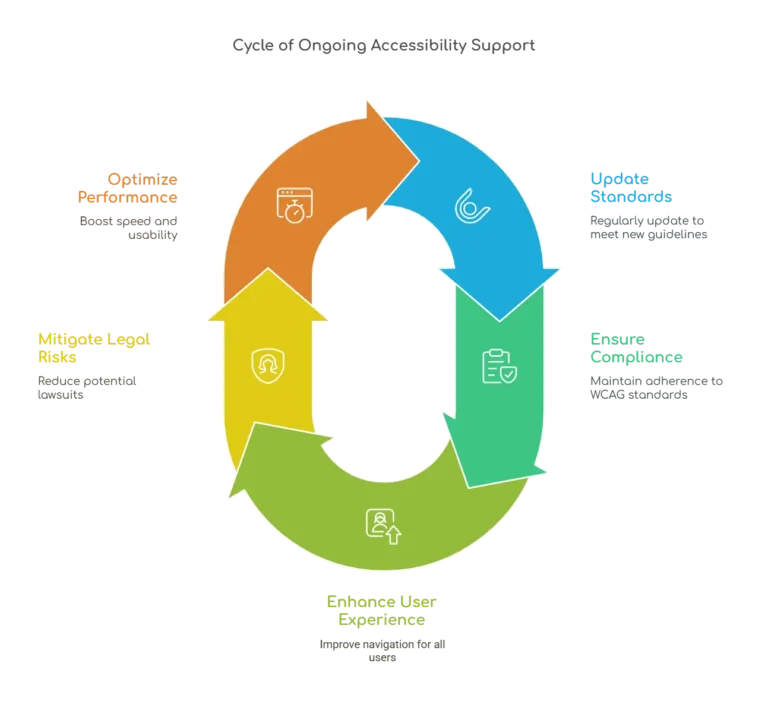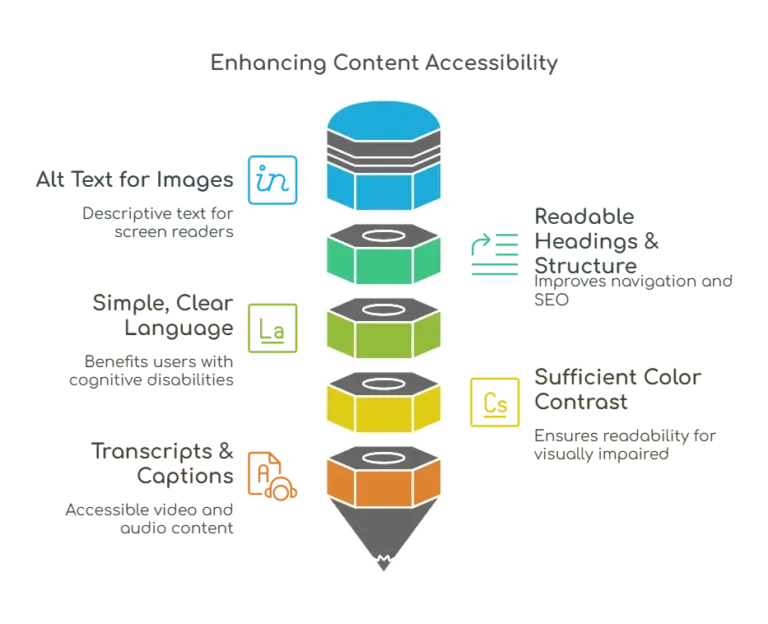Introduction
Having an online presence is essential for any business looking to succeed. And with the rise of e-commerce, it’s more important than ever to have a robust and user-friendly online store. One of the most popular e-commerce platforms out there is Magento, a powerful open-source solution that allows you to build a fully customized online Magento store from scratch. However, building Magento store from scratch can be a daunting task, especially if you’re new to e-commerce or web development. But don’t worry – we’re here to help. In this ultimate guide, we’ll walk you through everything you need to know to build a successful Magento store from scratch. From setting up your store to optimizing for SEO, we’ve got you covered.
Setting up Your Magento Store
Before you can start building Magento store, you need to set up your store. Here are the steps you need to follow to get started:
The Importance of Choosing the Right Domain Name
The first step to building Magento store is to choose a domain name. Your domain name is the web address that customers will use to access your store, so it’s important to choose something that’s easy to remember and represents your brand. Here are some tips to help you choose the right domain name:
Keep it Simple and Memorable
Choose a domain name that’s easy to remember and easy to spell. Avoid using numbers or hyphens, which can make it harder for customers to remember your domain name. Instead, choose a name that’s simple, catchy, and reflects your brand.
Make it Relevant
Choose a domain name that’s relevant to your business and the products you sell. This will help customers find your store more easily and will also help with SEO. For example, if you sell shoes, choose a domain name that includes the word “shoes” or a related keyword.
Use Keywords
Using keywords in your domain name can also help with SEO. Think about the words or phrases that customers might use to search for your products and try to incorporate them into your domain name.
 Consider Your Brand
Consider Your Brand
Your domain name should also reflect your brand and the image you want to convey. If you sell high-end products, for example, choose a domain name that sounds sophisticated and elegant.
Looking for a trusted partner to help you build and grow your e-commerce business? Our experienced Magento developers can provide you with the support and guidance you need. Let’s talk!
Choose the Right Extension
The extension is the suffix at the end of your domain name, such as .com, .net, or .org. Choose an extension that’s appropriate for your business and the audience you’re targeting. For example, if you’re targeting customers in a specific country, you might choose a country-specific extension, such as.co.uk or. com.au.
Once you’ve chosen your domain name, you’ll need to register it and set up hosting for your Magento store. This can usually be done through a web hosting provider, which will provide you with the necessary tools and support to get your store up and running.
Choose a hosting provider:
Next, you’ll need to choose a hosting provider. Your hosting provider will be responsible for storing your website files and making sure your site is always up and running. There are many hosting providers to choose from, so be sure to do your research and choose one that’s reliable and affordable. Here are some things to consider when choosing a hosting provider:
Reliability
Choose a hosting provider that’s reliable and has a good track record of keeping websites up and running. Look for providers that offer uptime guarantees and have a reputation for providing reliable service.
Speed
Site speed is important for both user experience and SEO. Choose a hosting provider that offers fast loading times and has servers located in the same region as your target audience.
Security
Security is crucial for e-commerce websites. Look for hosting providers that offer SSL certificates and other security features to keep your customers’ information safe.
Support
Choose a hosting provider that offers good customer support and is available 24/7 in case you run into any issues with your website.
Pricing
Compare prices from different hosting providers and choose one that’s affordable for your budget. However, be wary of providers that offer extremely low prices, as they may not provide reliable service.
Once you’ve chosen a hosting provider, you’ll need to set up your Magento store on the hosting provider’s servers. This can usually be done through a one-click installer or by manually installing Magento. Make sure to follow the hosting provider’s instructions carefully to ensure your store is set up correctly.
Install Magento:
Once you’ve chosen your domain name and hosting provider, you can install Magento. Magento offers a free Community Edition that you can download and install on your own server. If you’re not comfortable with installing Magento yourself, you can always hire a developer to do it for you. Here are the steps to install Magento:
Step 1: Download Magento
Go to the Magento website and download the Community Edition. You can choose to download either the full version or the light version, depending on your needs.
Step 2: Upload Magento
Once you’ve downloaded Magento, you’ll need to upload it to your server. You can use an FTP client like FileZilla to upload the files to your server. Make sure to upload the files to the root directory of your domain.
Step 3: Create a Database
Magento requires a MySQL database to function. You’ll need to create a database and a user with full privileges. You can do this through your hosting provider’s control panel.
Want to learn the secrets to building a thriving Magento store from scratch? Our comprehensive guide has everything you need to know. Contact Us.
Step 4: Run the Installation Wizard
Once you’ve uploaded Magento and created a database, you can run the installation wizard. Go to your domain in a web browser and follow the instructions to install Magento. You’ll need to enter your database information and set up your store’s basic settings.
Step 5: Customize Your Store
Once you’ve installed Magento, you can customize your store to fit your needs. You can choose a theme, install extensions, and set up payment and shipping methods.
If you’re not comfortable with installing Magento yourself, you can always hire a developer to do it for you. Magento also offers a paid version called the Enterprise Edition, which comes with additional features and support.
Building Magento Store? Customize your store
After you’ve installed Magento, you can start customizing your store. Here are some ways to customize your store:
Add Your Logo
Adding your logo is an important part of branding your store. You can upload your logo in the backend of Magento, under the “Content” section.
Create Product Categories
Organizing your products into categories makes it easier for customers to find what they’re looking for. You can create product categories in the backend of Magento, under the “Catalog” section.
Design Your Store’s Layout
Magento offers a wide range of customization options for your store’s layout. You can choose from different page templates, create custom blocks, and add widgets to your pages. If you’re not comfortable with designing your store’s layout yourself, you can hire a developer to do it for you.
Install Extensions while building Magento Store
Magento has a wide range of extensions available that can add additional functionality to your store. You can browse the Magento Marketplace for extensions that fit your needs.
Set Up Payment and Shipping Methods
You’ll need to set up payment and shipping methods for your store. Magento offers a range of payment and shipping options, including PayPal, credit cards, and shipping carriers like USPS and FedEx.
Test Your Store while building Magento Store
Before launching your store, it’s important to test it thoroughly to make sure everything is working properly. Test all the links, forms, and checkout process to make sure there are no issues. You can also ask friends and family to test your store and give feedback.
Customizing your store is an ongoing process, so don’t be afraid to make changes and try new things. Keep track of your store’s performance and make adjustments as needed.
Choosing the Right Theme Before Building Magento Store
Once you’ve set up your Magento store, the next important step toward building Magento store is to choose the right theme. Your theme is what determines the look and feel of your store, so it’s important to choose one that’s visually appealing and user-friendly. Here are some tips to help you choose the right theme:
Look for responsive designs:
With more and more customers shopping on their mobile devices, it’s important to choose a theme that’s responsive. This means that the design will automatically adjust to fit any screen size, ensuring that your store looks great on desktops, tablets, and smartphones.
Consider your brand:
Your theme should reflect your brand’s personality and values. If you’re a luxury brand, for example, you might want to choose a theme that’s sleek and sophisticated. If you’re a fun and playful brand, on the other hand, you might want to choose a theme that’s colorful and whimsical.
Don’t have the time or resources to build your Magento store on your own? Let our team of experts help you! Contact us today to learn more.
Check for compatibility:
Before you choose a theme, make sure it’s compatible with your version of Magento. Some themes may not work with certain versions of Magento, so it’s important to do your research before making a decision.
Creating Compelling Product Descriptions while building Magento Store
One of the keys to building a successful Magento store is creating compelling product descriptions. Your product descriptions are what sell your products to your customers, so it’s important to make them as engaging and informative as possible. Here are some tips to help you create compelling product descriptions:
Use descriptive language:
When writing product descriptions, use descriptive language that helps customers visualize the product. For example, instead of saying “This shirt is blue,” you could say “This navy-blue shirt is made from soft, breathable cotton.”
Highlight product features:
Make sure to highlight the key features of your products in your descriptions. This can include things like materials, sizes, colors, and any unique features or benefits.
Tell a story:
Use your product descriptions to tell a story about your products. For example, if you’re selling handmade jewelry, you could talk about the artisanal process that goes into making each piece. This can help customers feel more connected to your brand and products.
Optimizing Your Store for SEO
Once you’ve set up your Magento store and created compelling product descriptions, the next step is to optimize your store for SEO. SEO, or search engine optimization, is the practice of improving your website’s visibility and ranking on search engines like Google. Here are some tips to help you optimize your Magento store for SEO:
Use keywords while building Magento Store:
Make sure to use relevant keywords throughout your website, including in your product descriptions, meta descriptions, and titles. This will help search engines understand what your website is about and improve your ranking for relevant search terms.
Optimize your images:
Make sure to optimize your images for SEO by using descriptive filenames and alt tags. This will help search engines understand what your images are about and improve your ranking for relevant search terms.
Use internal linking while building Magento Store:
Internal linking is the practice of linking to other pages on your website. This can help search engines understand the structure of your website and improve your ranking for relevant search terms.
Marketing Your Magento Store
Once your Magento store is up and running, the next step is to start marketing your store. Here are some tips to help you promote your store and attract customers:
Use social media:
Social media is a powerful tool for promoting your store and connecting with customers. Make sure to create profiles on all the major social media platforms and post regularly to keep your followers engaged.
Offer promotions:
Offering promotions and discounts can be a great way to attract new customers and encourage repeat business. Consider offering a discount code to new subscribers or running a limited-time sale to generate buzz around your store.
Partner with influencers:
Partnering with influencers in your niche can be a great way to reach a new audience and build credibility for your brand. Consider reaching out to influencers in your industry and offering them free products in exchange for a review or promotion on social media.
FAQs
Q: Is Magento difficult to use?
A: Magento can be more complex than some other e-commerce platforms, but it offers a wide range of customization options and is highly scalable. If you’re new to e-commerce or web development, you may want to consider hiring a developer to help you set up your store.
Q: How much does it cost in Building Magento store?
A: The cost of setting up a Magento store can vary depending on your hosting provider, theme, and any custom development work you need. However, Magento offers a free Community Edition that you can download and install on your own server, which can help keep costs down.
Q: How long does it take in Building Magento store?
A: The time it takes in building Magento store can vary depending on your level of experience and the complexity of your store. If you’re starting from scratch and need to create a custom theme or install a lot of plugins, it could take several weeks or even months. However, if you’re using a pre-built theme and only need to make minor customizations, you could set up your store in a matter of days.
Ready to build your own successful Magento store from scratch? Get our ultimate guide now and start your e-commerce journey today!
Conclusion
Building a successful Magento store from scratch takes time, effort, and attention to detail. However, by following the tips outlined in this article, you can set yourself up for success and create a store that attracts customers, generates sales, and builds your brand. Remember to focus on creating compelling product descriptions, optimizing your store for SEO, and marketing your store effectively to reach a wider audience. With hard work and dedication, you can build a thriving e-commerce business on the Magento platform.
Read the Top 8 Reasons Why You Should Hire a Professional Magento Developer







